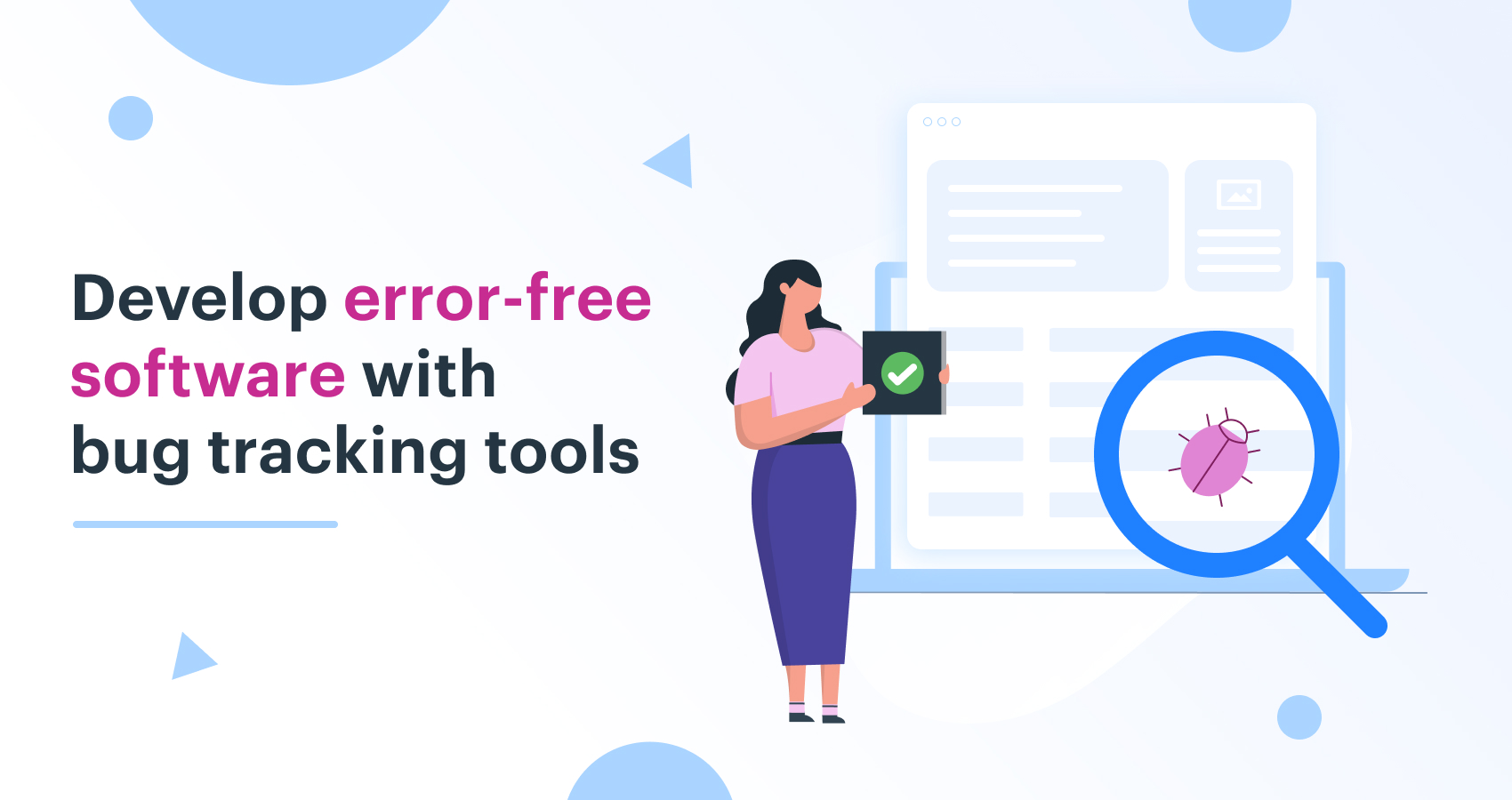Producing flawless products is a practical impossibility. From subtle security vulnerabilities to errors that cause the app crashes, bugs are a norm in the product development life cycle. While they cannot be avoided, they sure can be minimized. The process of resolving bugs and reducing disruption is one of the most challenging aspects of product development — and this is what a bug tracker does.
Types of Bugs
Bugs are broadly categorized into two groups. They can be either progression bugs or regression bugs.
Progression bugs refer to bugs that are logged when new features or functionality are added to a system.
Regression bugs on the other hand refer to errors that occur in the existing system as a side effect of use or a consequence of changing things in other parts of the code.
For very complex products, there’s always the possibility of breaking something when changes are made to the code. Errors introduced this way are known as regression bugs.
What is Bug Tracking?
Bug tracking refers to the process of logging and monitoring errors that are detected during product testing. It involves identifying bugs, evaluating them to determine their impact on the system, and prioritizing them based on their significance.
Why is Bug Tracking Crucial to the Product Life Cycle?
For large systems where hundreds or thousands of defects are detected, bug tracking may take a significant amount of time and is ongoing throughout the product development lifecycle.
A bug tracking tool makes it easier to do the following things:
Identifying product bugs along the way
Typically, every thousand lines of code contains anywhere between 100 to 150 bugs. Software testing is necessary to isolate and resolve these errors. Integrating bug tracking into your product testing process helps to seamlessly report, monitor, and prioritize these bugs as they are discovered along the way. A bug tracking tool shows the status of all bugs that have been logged with it.
Resolving bugs through repetitive testing
Bugs are often discovered through testing which is why it is an inevitably important aspect of product development. After bugs are identified and fixed, repetitive tests must be carried out to determine if the affected change has resolved the bugs and that no new errors have been introduced by the fix.
Proactive bug tracking and resolution
Proactive product testing is needed to catch errors quickly. Rather than allow a bunch of errors to show up later in the production phase, the production team can identify errors early and resolve them preemptively. This reduces the need for revisions later on.
Reactive bug tracking and resolution
Errors may be identified later after product release either by the end-user or by a member of the product development team. Reactive bug tracking involves identifying and reporting these errors in order to have them resolved appropriately.
Grooming the product and features
Progression bugs in particular often result from poor grooming. A bug tracking system can improve the development process by providing a single workflow for easy traceability and monitor identified reports.
How Bug Tracking Helps in Customer Retention and Success

Bugs are disruptive to the product experience and this may adversely affect user experience. For instance, if you build a system that bills users for your subscription-based product, but they’re unable to make payment because your billing portal does not work properly, users will lose access to your service. Bugs like this disrupt service and make you lose customers who opt for better performing and functional alternatives to your products.
Smoother operations
An effective bug tracking process ensures that there are no disruptions to product use. With proactive bug tracking, issues are identified early before product release. A good bug tracking tool gives an overview of all identified errors so that nothing slips through the cracks. Reactive bug tracking also ensures that issues identified during use are promptly fixed to ensure minimal impact on product operation.
Better feature experiences
Bug tracking ensures effective resolution of both regression and progression bugs. This ensures that the product works as designed and new feature additions and changes to the system do not break your product. Teams can effectively tie defects to code changes and there is sufficient data for easy traceability and analysis of defect trends.
Show them you’re listening
Bug tracking tools allow product teams to uncover defects seamlessly. It also makes it easier to take feedback from users, measure the scope and impact of the bug report and resolve them promptly. Being able to see the status of each bug ensures that nothing is missed and all issues are fixed in future releases of the product. Users have better satisfaction with your products when they’re convinced that you’re listening to them.
Better ROI
In the long run, the ultimate goal of developing a robust error tracking system is to boost your profit margin. Investing in a quality bug tracking tool can help reduce the overall cost of development while helping you keep more customers. With all issues logged and prioritized, it is easier to trace them and fix all of them systematically. Good bug tracking tools also have features for assigning, monitoring and logging tasks. This helps to avoid bottlenecks in bug resolution ultimately cutting production time and improving your ROI.
Conclusion
Bugs are unavoidable. All product developers can do is ensure they have a solution in place to catch bugs proactively and resolve them as soon as possible.
Kissflow Workflow is a robust bug tracking system that can help you track bugs as they are reported, investigate root causes, collaborate efficiently, and drive down resolution times. The platform provides a scalable and sophisticated framework to help you collect information, adopt a flexible approach to bug resolution, and streamline operations without the stress of implementation.
Let’s show you how it’s done. Try Kissflow Workflow – Issue Tracking for free.